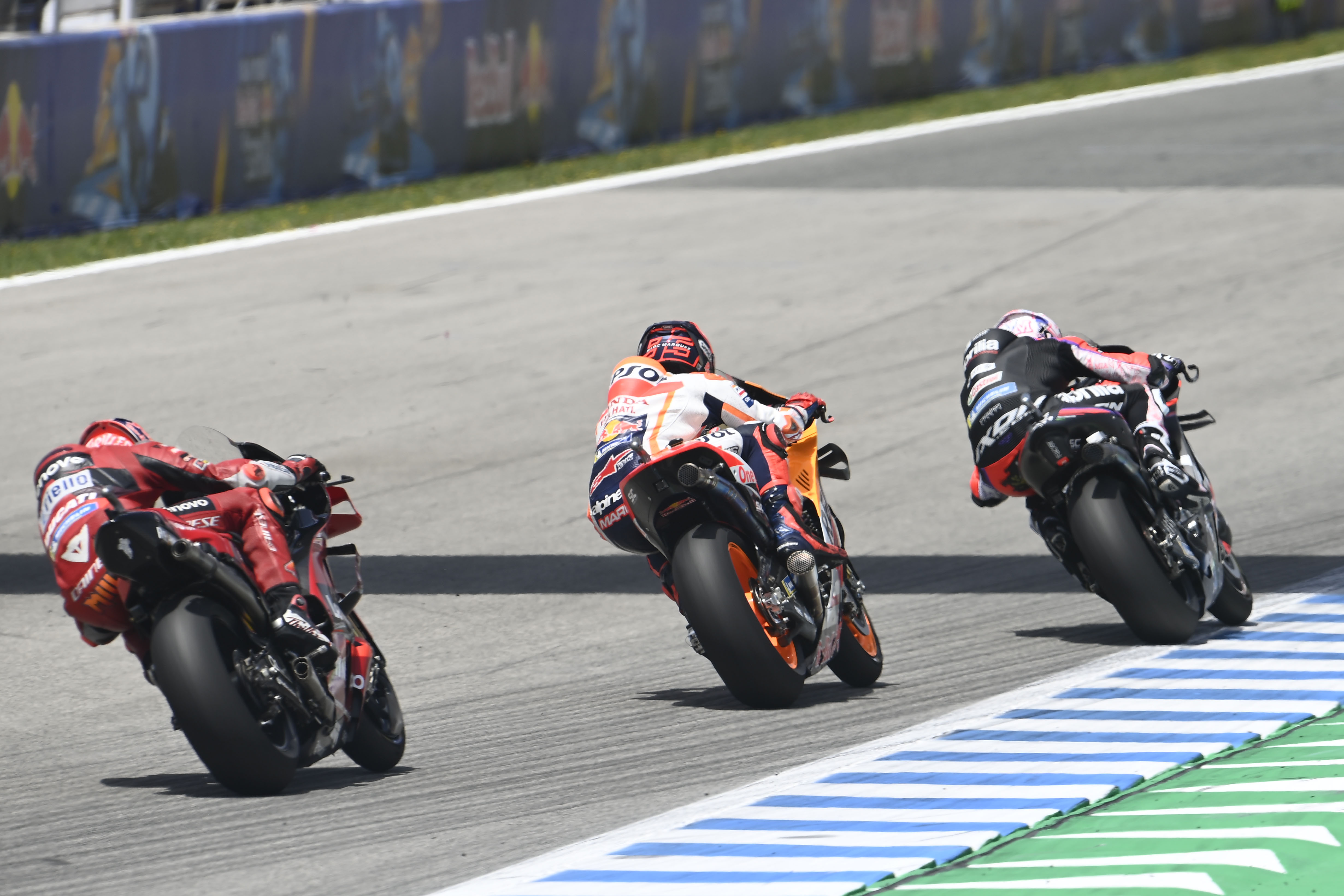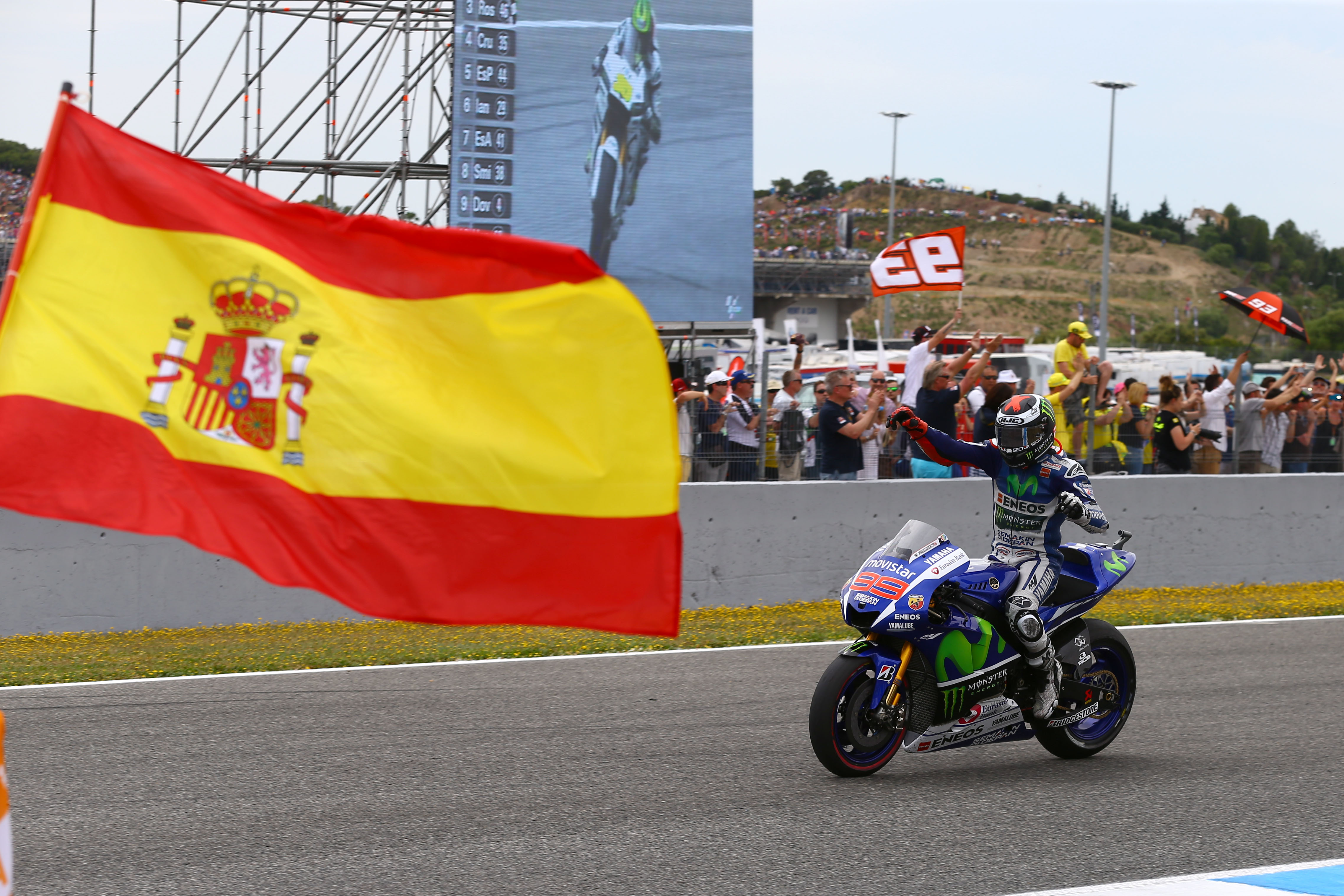until Abu Dhabi Autonomous Racing League

Jerez holds a special significance to modern MotoGP, and not just because of what’s happened over the years on the circuit’s 2.751-mile layout.
Instead, it has routinely found itself signifying the start of the ‘European season’, and potentially the point where things really begin to settle into their natural order.
“For me, everything calms down when we get to Jerez, normally,” argues KTM’s Brad Binder.
Asked if he felt things change when MotoGP reaches Jerez, Yamaha’s Franco Morbidelli replies: “Yeah, usually that happens. Usually that happens. We need to see how, in which way, and how much”.
Granted, the last three years added a twist – in 2020 Jerez started the COVID-shortened season, and in both 2021 and 2022 it was immediately preceded by (also European but markedly more quirky and unfamiliar) Portimao.
But this year, its status is back. MotoGP is scheduled to be in Europe, on familiar mainstay tracks, for eight of the nine races following Jerez, with only Kazakhstan the outlier – unless you’re UEFA or something, in which case it’s also a European nation.
The 2023 version of MotoGP is primed for a reset, its current championship picture is not one that anybody really expects to sustain itself and with multiple injury-sidelined key players expected to make a return.

Yet the ‘Jerez reset’ may well be a myth. It’s hard to say. The arguments for it is that it’s a more conventional, more familiar track that hosts boatloads of testing, and that it’s about the time when those adjusting to major off-season changes – which, given the new format this year, is effectively the whole grid – start to deliver up to their potential.
The argument against is that it’s just another race and that whatever new trends it uncovers might only be ‘new’ because of the small sample size of the races that preceded it.
Take a random rider in the top five in the standings heading into Jerez, in any year since 2013 excluding 2020, and there’s a 73% chance they remain in the top five come the season’s end. Although cutting the sample to, say, 2018-2022, does reduce it to 57%.
More clear is that the early championship lead really hasn’t translated. Since 2013, again excluding 2020, only four times did the pre-Jerez points leader end up being the eventual champion (and in one of those cases it was a joint championship lead between Marc Marquez and Jorge Lorenzo in 2013). And in that sense, the current tribulations of presumed favourite Pecco Bagnaia fit very neatly into the existing pattern.
Thanks to the sprints, Bagnaia has amassed 48% of the available points, which is almost fewer than any eventual champion had coming into Jerez for the past decade. Almost because last year Bagnaia, struggling with the 2022 Ducati in its initial form, sat at 25%.
Champion’s points share of available total, pre-Jerez (and then at season’s end)
2014: Marc Marquez (Honda) – 100% (80%)
2016: Marc Marquez (Honda) – 88% (66%)
2013: Marc Marquez (Honda) – 82% (74%)
2021: Fabio Quartararo (Yamaha) – 81% (62%)
2018: Marc Marquez (Honda) – 60% (71%)
2019: Marc Marquez (Honda) – 60% (88%)
2017: Marc Marquez (Honda) – 51% (66%)
2015: Jorge Lorenzo (Yamaha) – 49% (73%)
2022: Pecco Bagnaia (Ducati) – 25% (53%)
Bagnaia’s current 11-point deficit to Marco Bezzecchi is nothing compared to the 29-point hole that Lorenzo had put himself in during 2015. And he is at least second in the standings, unlike Lorenzo was in 2015 or Marquez was in 2019.

There is genuinely something remarkable about how scuffed some of Marquez’s season starts were. From 2017 to 2019, he never led coming into Jerez – which in each case meant he didn’t lead coming out of the Circuit of the Americas. COTA! His COTA.
He tended to use up his jokers early. He was never great in Qatar, but also crashed from a clear lead in Argentina in 2017 and in the United States in 2019, and had his ‘demolition derby’ ride in a 2018 Termas de Rio Hondo race he also probably should’ve won.
In that sense, Bagnaia’s more or less following the blueprint. And, like in Marquez’s case, it could still be an extremely dominant championship if he settles down coming into the European leg.
Obviously, it’s not necessarily that simple, and Bagnaia doesn’t have the body of work of Marquez. Mostly he doesn’t have his stability – Marquez’s career DNF rate sits at 15.5%, and has actually been inflated post-injury, whereas for Bagnaia it is a fairly brutal 28.6%.
Still, in the absence of a clear, fit title rival, that needn’t be destructive. And, whether he believes in a ‘Jerez or not’, the good news for Bagnaia – and the bad news for his rivals – is that, with the remainder of the calendar and the new sprint format, and the fact most of the tracks coming up are quite familiar, the law of large numbers is likely to do the trick and help him to the cushion he has failed to build up so far.


